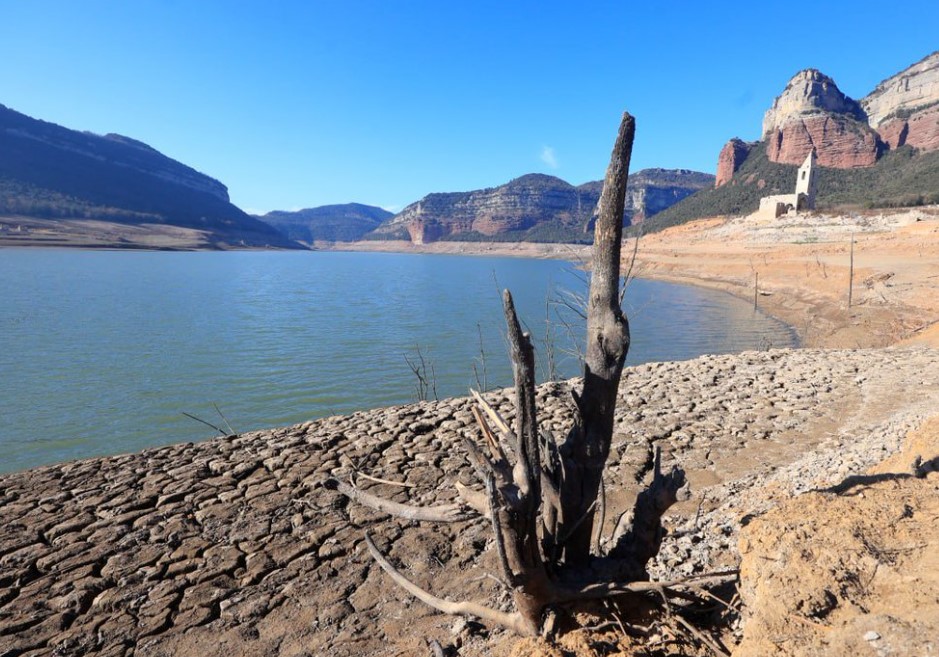Catalonia has become the “Zone 0 of the Climate Crisis” according to a recent study by the Meteorological Service of Catalonia (Meteocat), surpassing metropolises like New Delhi, Tokyo, or Athens in terms of temperature anomalies. The investigation highlights the dramatic intensification of droughts in recent years and paints an alarming picture for the region’s future.
The Drought in Catalonia: A Historical Analysis
The Meteocat study, analyzing drought periods from 1787 to 2024, confirms that the most recent drought from 2021 to 2024 is the most severe since records began. Although the wet spring of 2025 brought a brief respite, the immense rainfall deficit of previous years could not be compensated. Vicente Altava, a drought expert at the Meteorological Service of Catalonia, emphasizes the unprecedented challenge posed by this drought.
The analysis shows that the Catalan drought is part of a larger problem affecting the entire Western Mediterranean. Altava warns of increasing aridity in the Mediterranean climate, leading to more intense and frequent droughts across the region – a phenomenon not observed on this scale since the Little Ice Age. Recovery times between drought periods are drastically shortening, reducing the intervals between extreme events. Three of the most severe droughts in the analyzed period occurred in the 21st century, with the 2004-2008 and 2021-2024 periods being the most serious in terms of intensity, extent, and duration. The northern and eastern hydrographic sub-basins such as Muga, Fluvià, and Ter are particularly affected by this development.
Temperature Anomalies: Catalonia in Global Comparison
The study provides scientific evidence for a worrying trend: the 2021-2024 drought episode was the most severe in Catalonia during the instrumental period since around 1915 and particularly since the 1970s. The Drought Severity Index (GISE) reached a peak value of 4.91 on a scale of 0 to 5.
The exceptionally high temperature anomalies recorded in 2022 (2.7 °C), 2023 (2.4 °C), and 2024 (2.2 °C) position Catalonia as “Zone 0 of the global climate crisis.” Compared to the 1961-1990 climate average, average temperatures during the drought period were about 2.5 °C higher, further exacerbating water scarcity due to increased evapotranspiration. Altava highlights that this combination of drought and high temperatures from 2021 to 2024 is unique and has no climatic analogy in history. The temperature anomaly is also exceptional on a planetary scale, significantly exceeding the 1.5 °C temperature increase target set in the Paris Agreement.
Barcelona shows an anomaly of 2.5 °C for the triennium 2022-2024, making the city thermally more exceptional than New Delhi, Tokyo, and Athens. Only Rome and Marseille show even higher anomalies.
Future Forecasts: A Growing Challenge
The study’s findings align with climate projections for the Mediterranean region. The combination of decreasing precipitation and rising temperatures significantly increases the aridity of an area. If this trend continues, future droughts could acquire the characteristics of a climatic drought that can irreversibly alter the landscape of a territory. However, it is important to note that this dry climatic context does not preclude an increase in the occurrence of extreme rainfall events, as has been observed recently with the increase in extreme weather events.
Altava warns that future drought episodes could surpass the severity of the exceptional 2021-2024 drought and emphasizes the need to prepare for this. This combination of extreme weather events poses a tremendous challenge for water resource management, territorial infrastructure planning, and land management.




